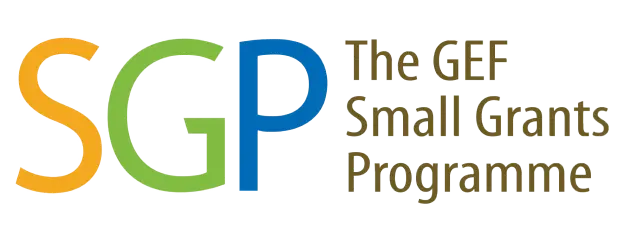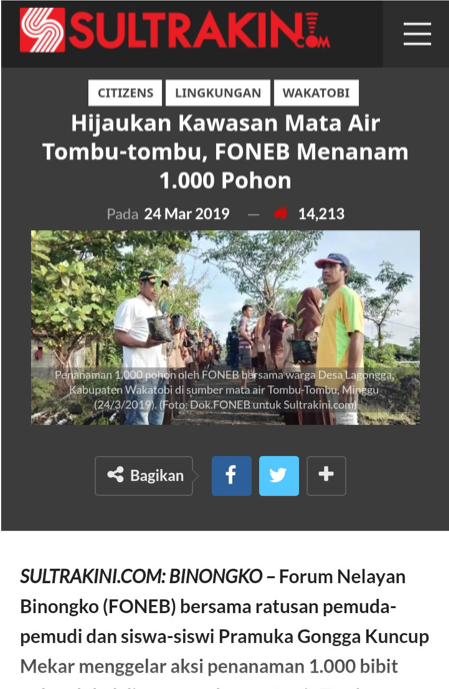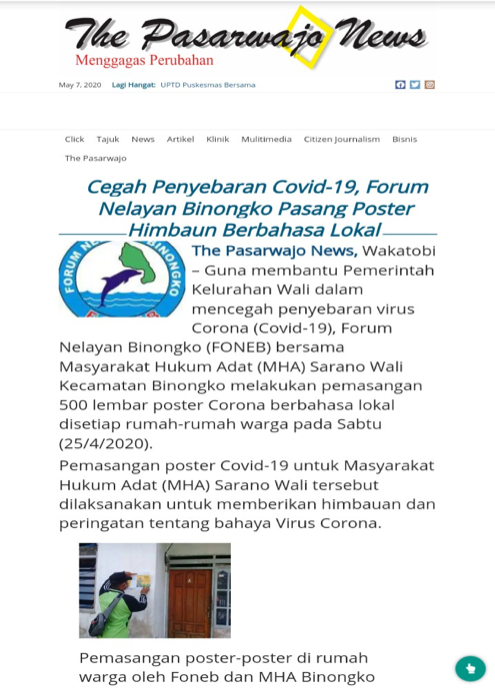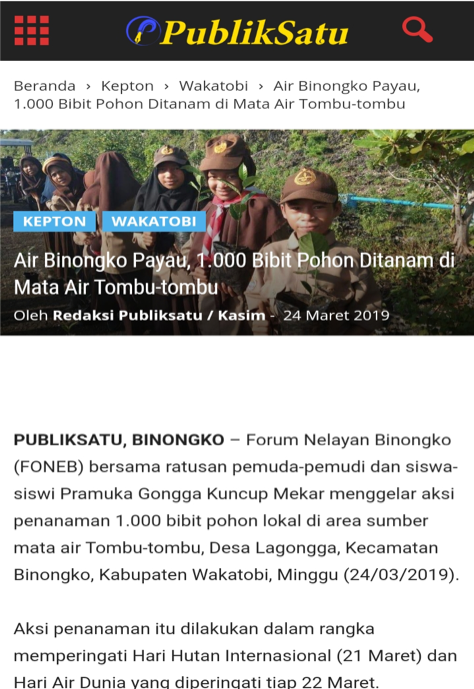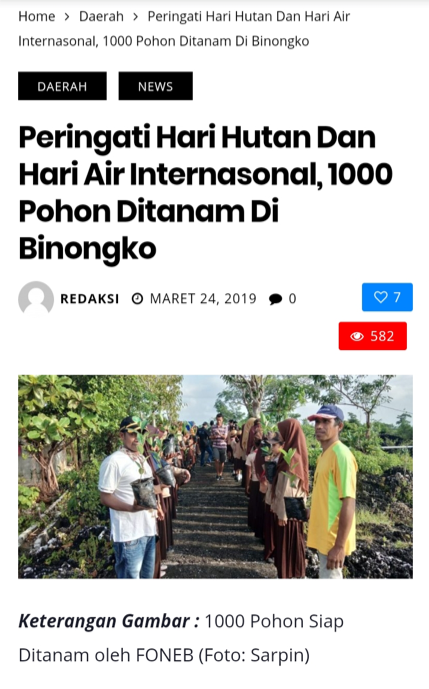Binongko Fishermen's Forum (FONEB)
(NO INS/SGP/OP6/Y2/STAR/BD/18/020 )
Outcome 1:
Making Kaombo Function Effective as a Source of Local Food Security for the Guardian Community.
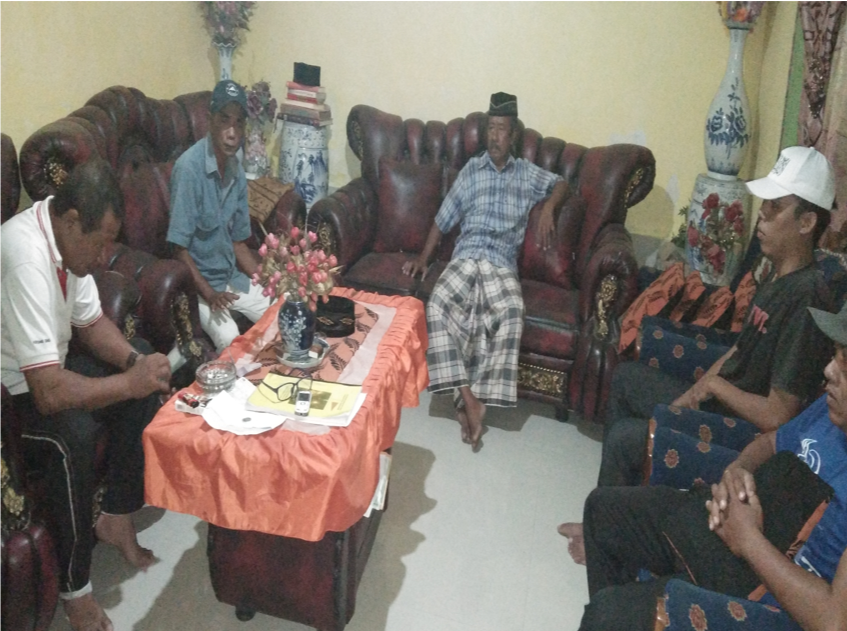
Photo 1: Initial FGD activity with Sarano Wali regarding making the Kaombo function more effective at Lakina Wali's residence (October 2019).
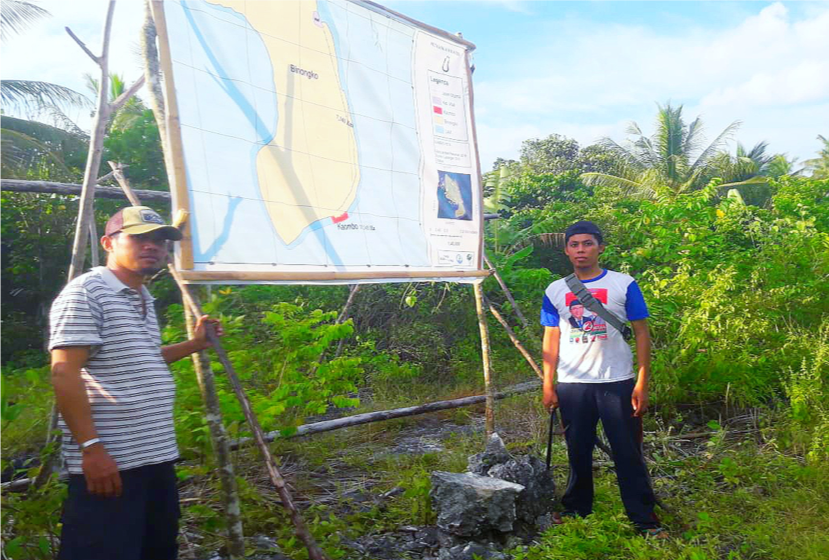
Photo 3: Kaombo map installation activities at the Mbara-mbara Beach location and in 4 Sarano Wali traditional areas, namely Wali Village, Jaya Makmur Village, Lagongga Village and Kampo-Kampo Village (May 2019).
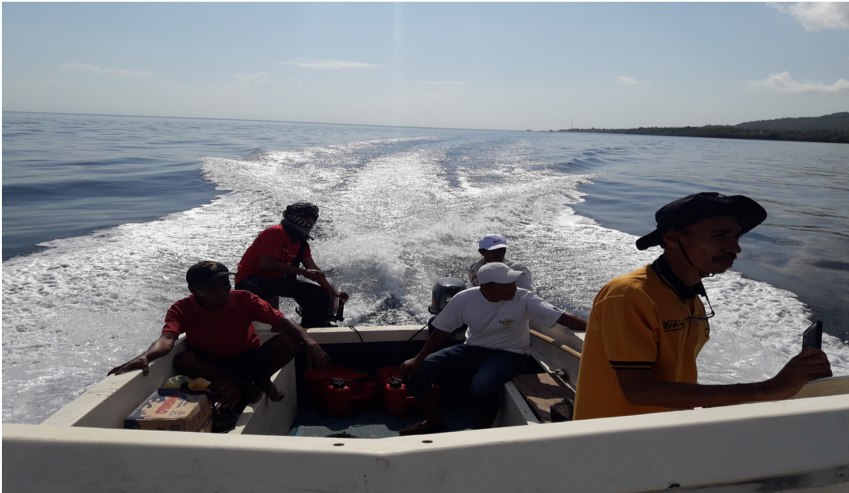
Photo 5: Regular monitoring and supervision activities with Adat Sarano Wali, DKP, Karang Taruna Raja Wali and the community in the Kaombo area.
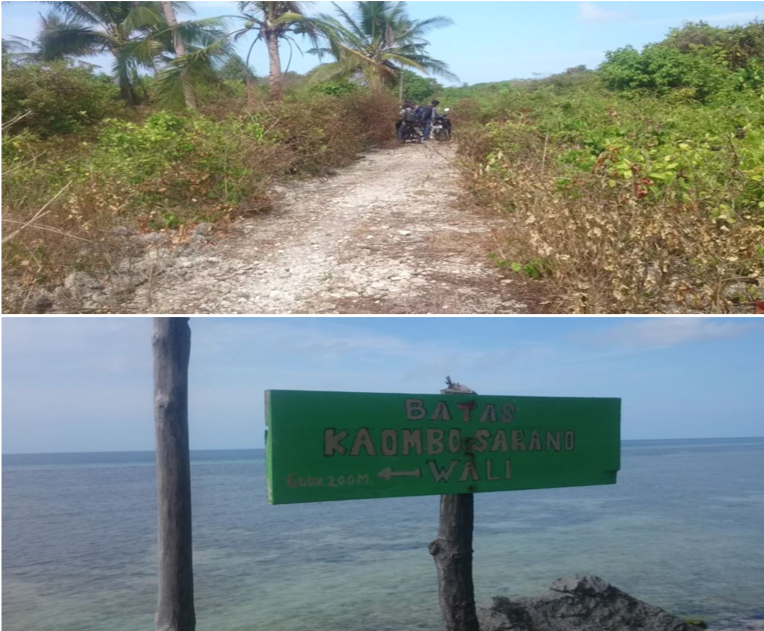
Photo 2: Mapping activities/taking coordinates of Kaombo, both on land and at sea (September 2019).
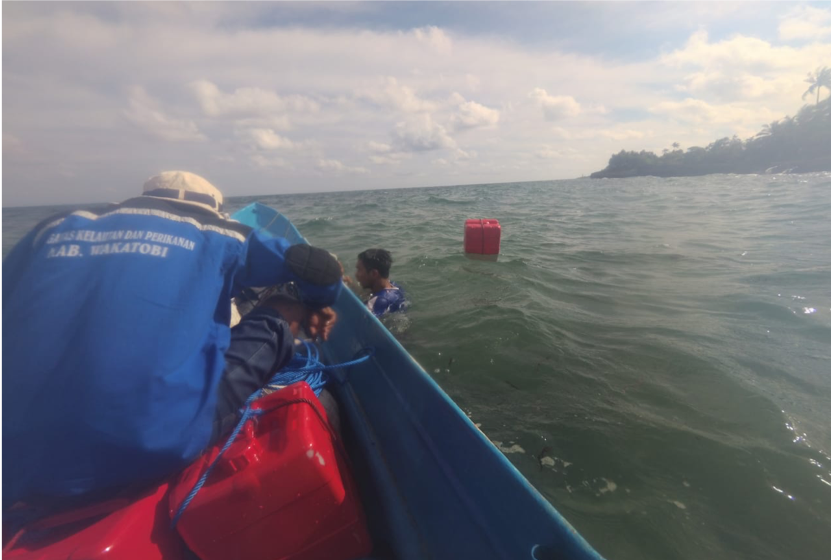
Photo 4: Activities to install markers or boundary signs for the Kaombo area (May 2019).
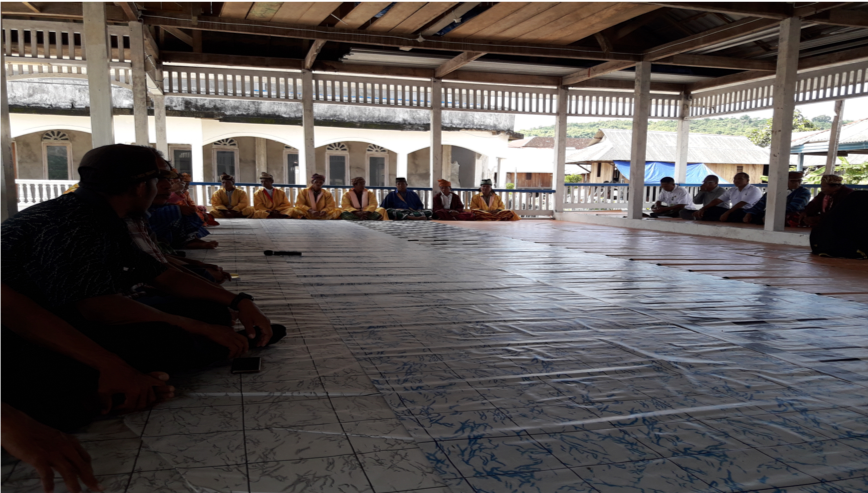
Photo 6: Sarano Wali Traditional Meeting regarding the preparation of a model for the use of Kaombo as a source of local food security (fish) for the Wali community and regarding the preparation of a model for the use of Kaombo as a source of local food security (fish) for the Wali community.
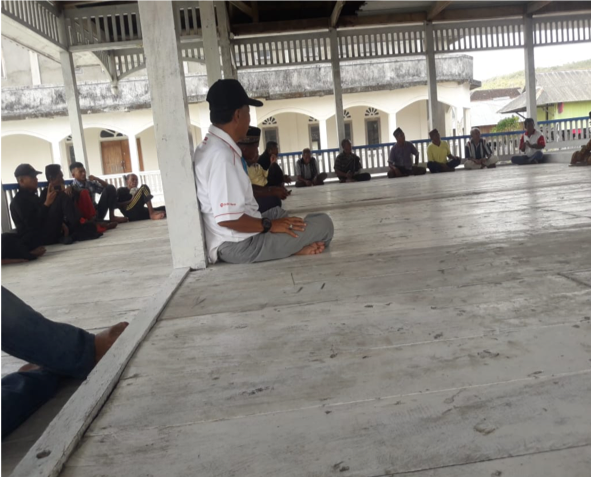
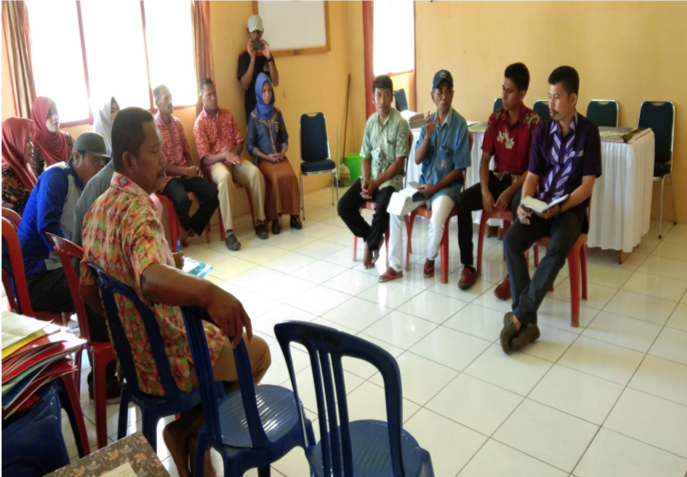
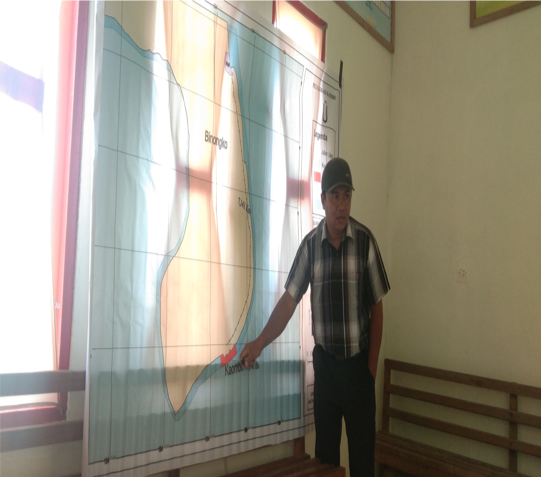
Photo 7: Socialization to the community about the model for using Kaombo as a source of local food security (fish) for the Wali community, namely Wali Village, Jaya Makmur Village, Lagongga Village, and Kampo-Kampo Village.
Outcome 2:
Availability of Forests as Water Catchment Areas in the Guardian Traditional Area.
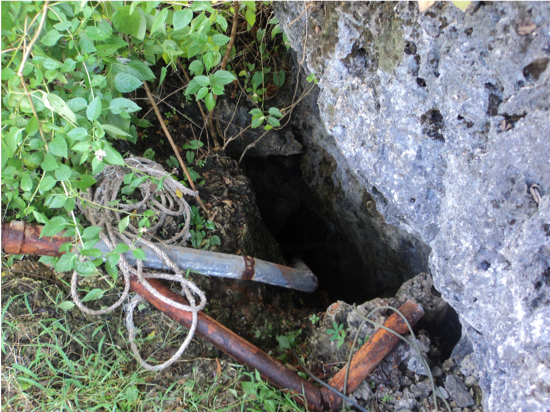
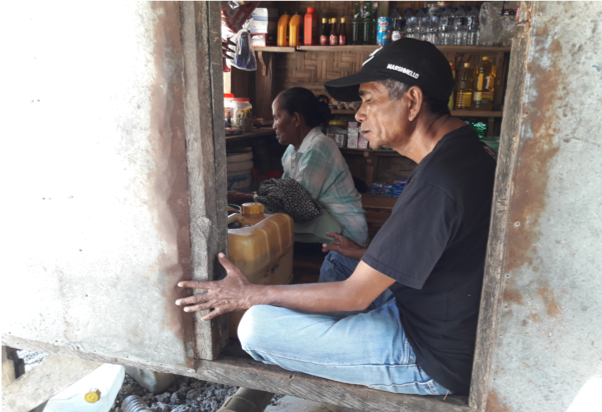

Photo 8: Activities to identify potential locations and carrying capacity of clean water springs and land owners.
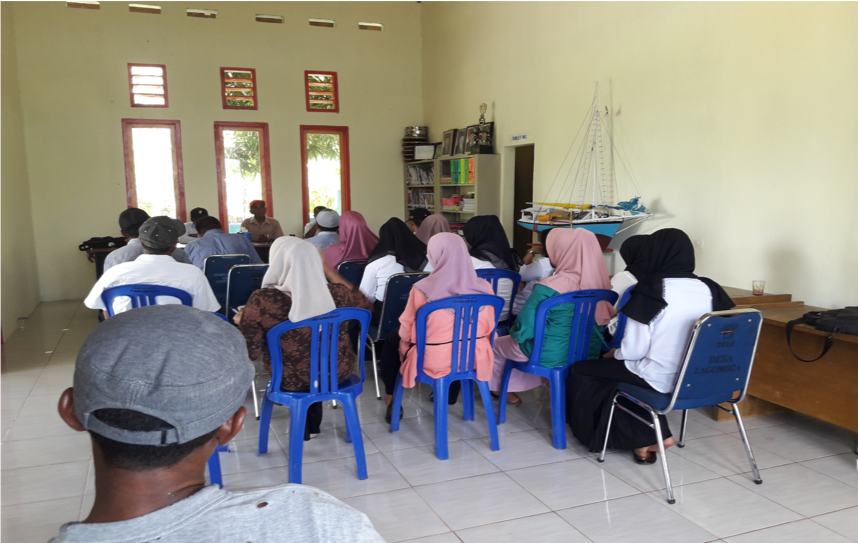
Photo 9: FGD activities regarding agreements and plant protection operations around springs to guarantee the availability of clean water at the Lagongga Village Office.
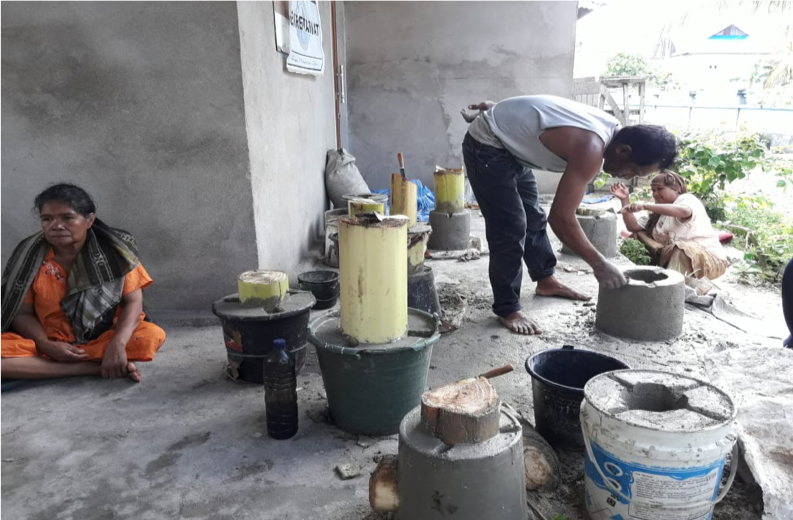
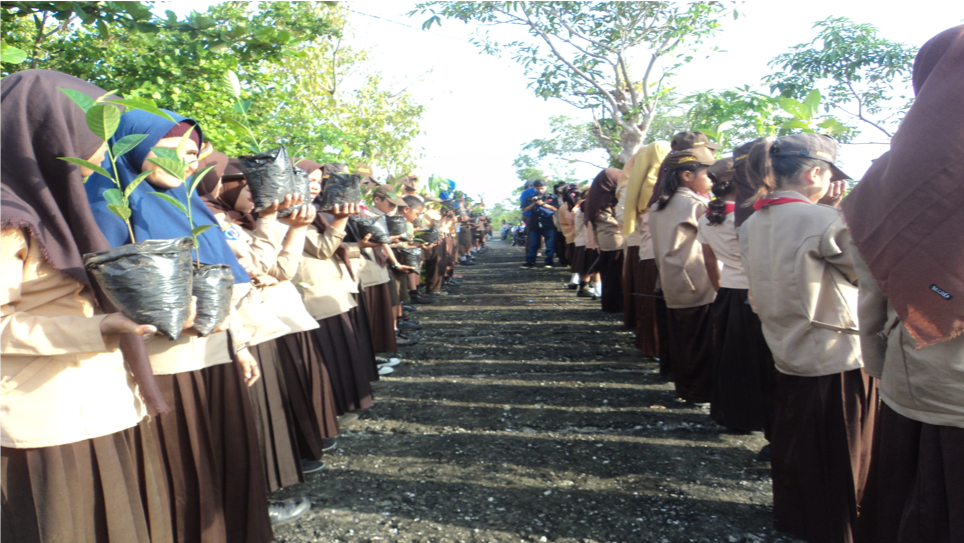
Photo 10: The activity of planting 1000 local trees at the Tombu-tombu spring involving the Lagongga Village Government, Lagongga BPD, members of the Scouts, Nusantara Sehat, Babinsa, religious leaders, members of youth organizations and the community.
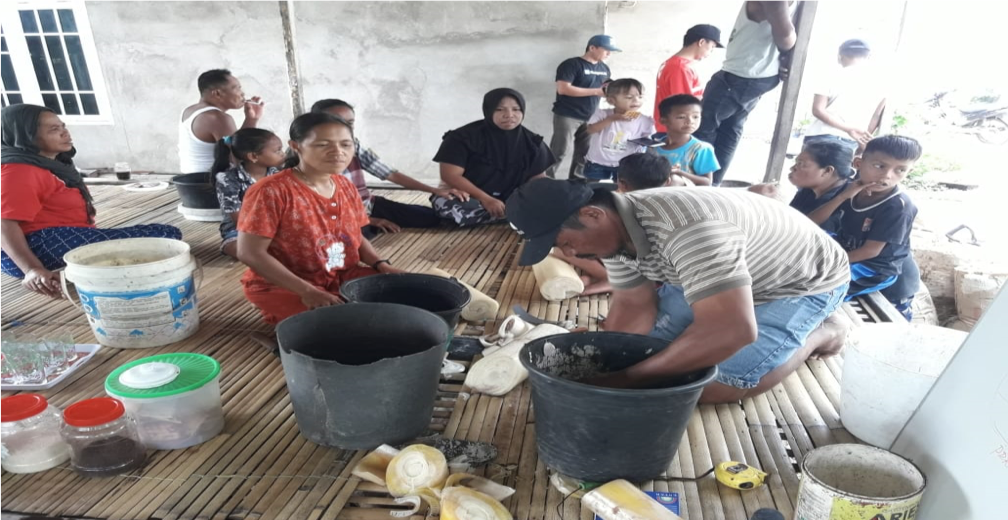
Photo 11: The activity of making wood-saving stoves involves the community, the Suka Maju group and PKK women.
Outcome 3:
Increasing community food security through better and more sustainable agricultural and fisheries cultivation practices as well as preserving local plant variations.
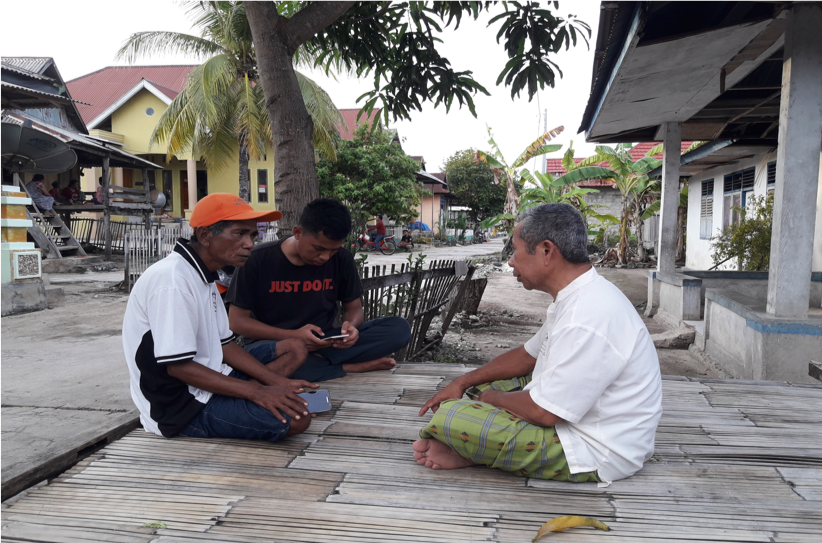
Photo 12: Activities to identify and document types of cultivation and main local food crops (tubers and corn and their uses).
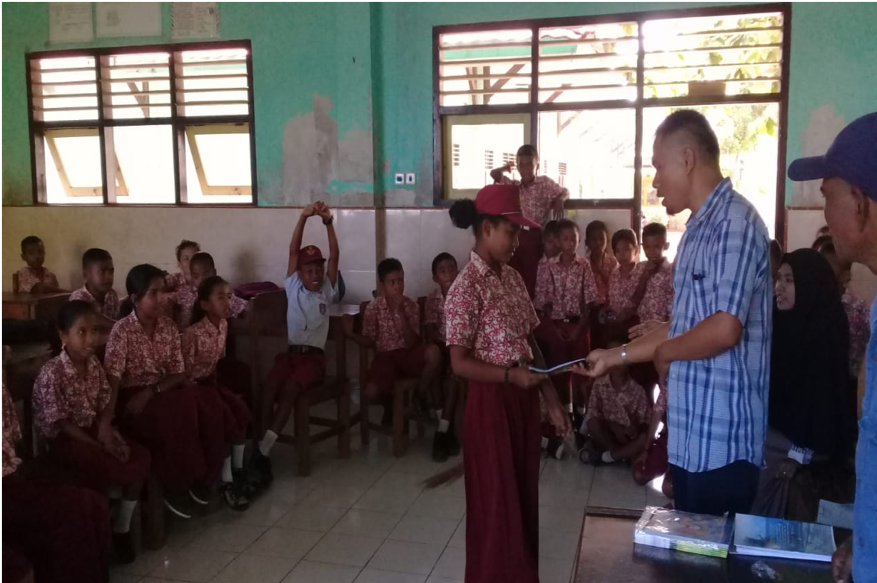
Photo 14: Activities encourage schools to transfer knowledge about management of local food plant species and cultivation through out-of-school learning.
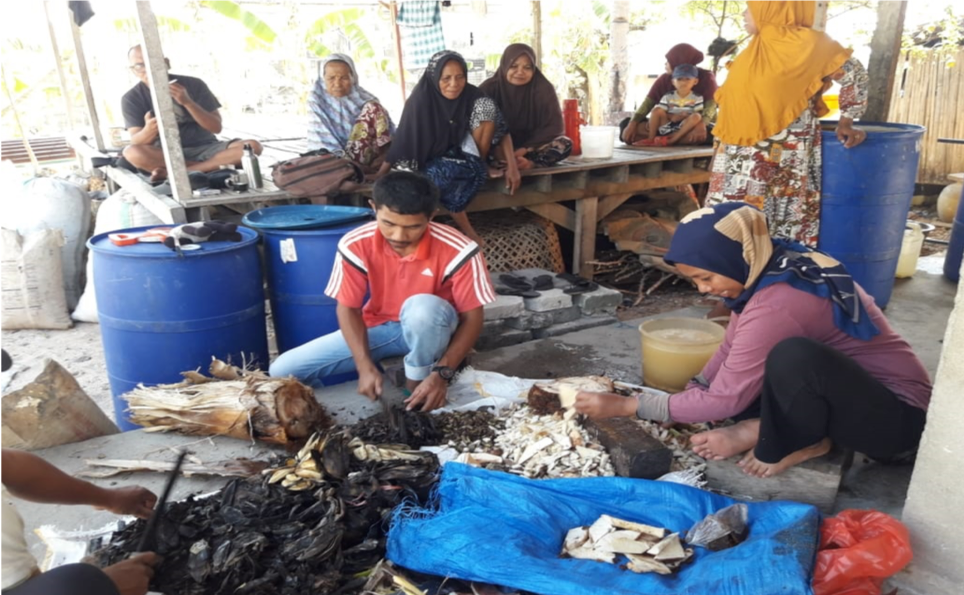
Photo 16: The training activity for making organic fertilizer also involved Mrs. Lakina Wali, PKK, Suka Maju Group, and the community.
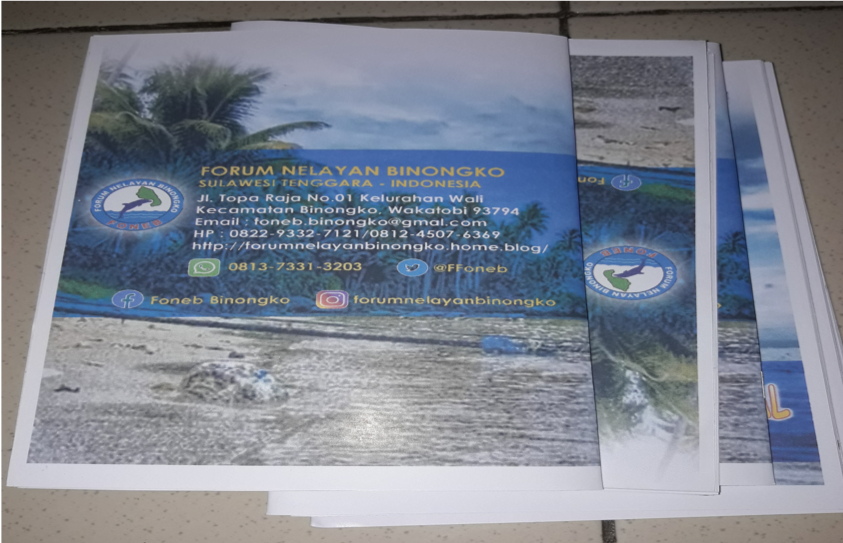
Photo 13: Preparation of a simple module about the types, methods of managing and cultivating local plants as well as the technology used by the guardian community in the agricultural sector.
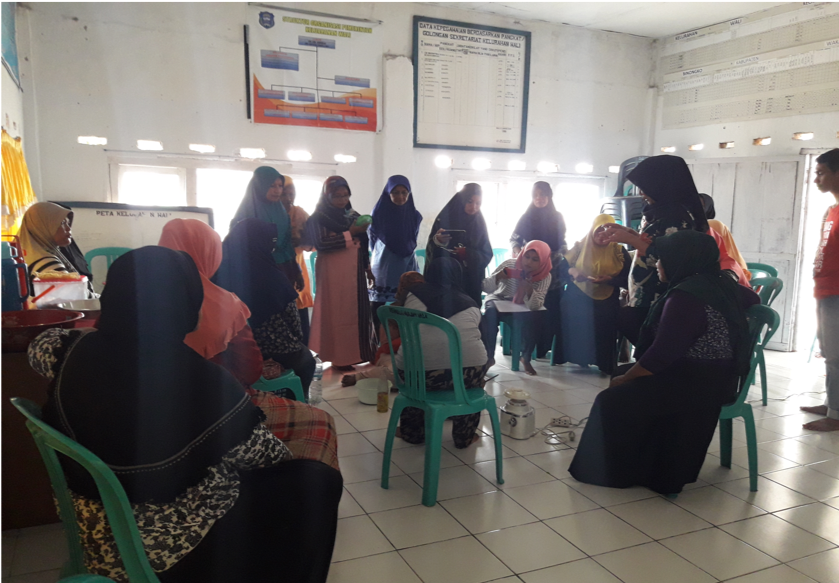
Photo 15: Activities to encourage PKK to become a resource in disseminating knowledge of the types and characteristics of tubers.
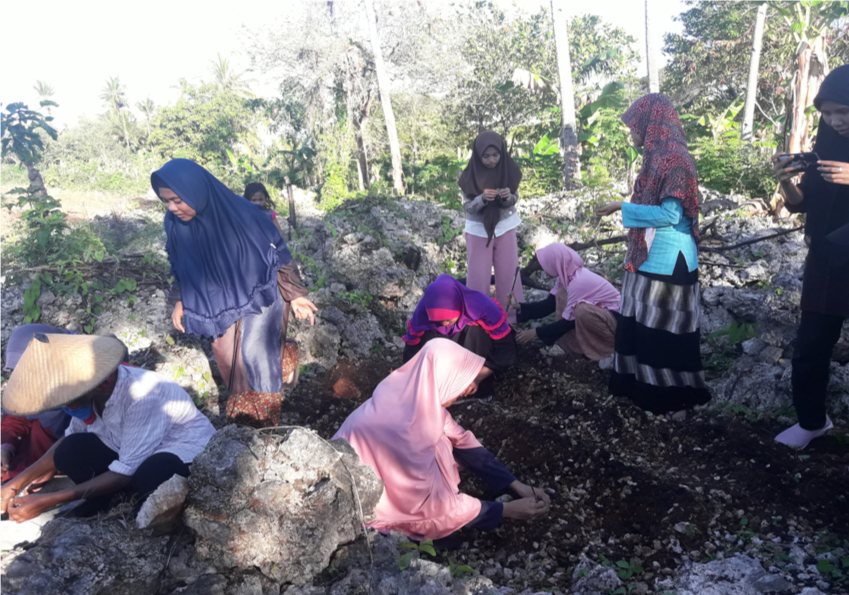
Photo 17: Activities to procure demonstration plots (demonstration gardens) for local food crops based on environmentally friendly agriculture.
PROJECT OUTCOMES
- There is a mutual understanding to make Kaombo's function more effective.
- There is data and information about the Kaombo coordinates and the area of the Kaombo area is known.
- Installation of 6 Kaombo boundary signs.
- Implementation of joint monitoring and supervision for the Binongko and Kaombo coastal areas.
- There is a document regarding the kaombo utilization model in the form of a Regional Regulation.
- There is a guarantee from the Lagongga Village Government to protect the plants planted in clean water source areas.
- Planting 1,000 local trees in the clean spring area.
- There were 30 stoves that were distributed to the community after the training.
- As many as 400 families have used wood-saving stoves.
- Printed modules on local food and traditional fishing gear as reading material.
- Implementation of PKK activities as a resource and disseminating knowledge of local food types.
- Implementation of demonstration plots (demonstration plantations).
IMPACT
Positive:
- Kaombo has begun to be known by parties, especially the local community of Binongko Island.
- Kaombo is a spawning place for fish and other biota.
- Fishermen's catches have increased.
- Healthy coral reefs and abundant fish.
- There are 2 community groups who make stoves independently to rent out at celebrations.
- There is a transfer of knowledge about making stoves by community groups to the people of Lagongga Village.
- The community already understands the importance of maintaining the condition of nature and trees.
- The community already has its own initiative to plant trees around the tombu-tombu spring area.
- Children gain new knowledge about the benefits of planting trees.
- The emergence of public awareness to use locally sourced fertilizer.
- The community has felt the impact of environmentally friendly agriculture.
- The community has produced its own local food based on environmentally friendly agriculture and has marketed agricultural products
Negative:
- There are still fishermen outside Binongko Island who don't know Kaombo's information.
- There are 3 communities that have surrounding garden land which are not allowed to land in the Kaombo area, thus causing polemics in the community.
- People do not fully use organic artificial fertilizers, because they are used to using factory-made fertilizers which are practical.
BEST EXPERIENCE
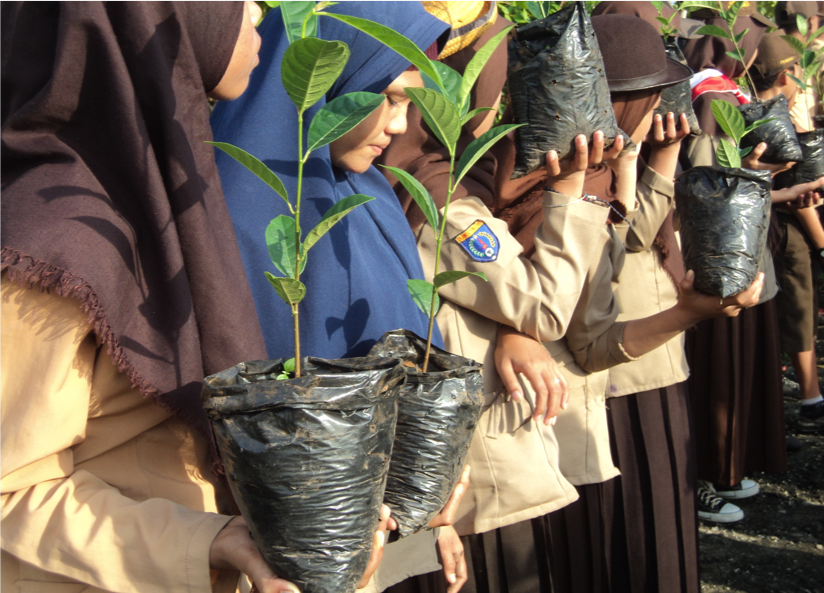
Photo 18: Planting activities of 1,000 trees in the Tombu-tombu spring area.
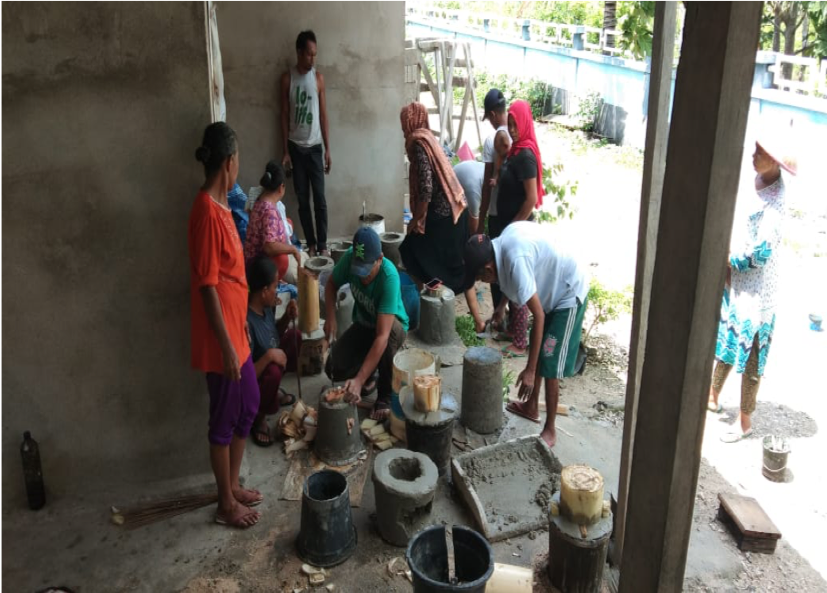
Photo 19: Activities for making wood-saving stoves.
PROJECT SUSTAINABILITY
- The Sarano Wali Traditional Party held deliberations with the community.
- Creation of a Kaombo area guard post and government support in the form of.
- Organizing Kaombo harvest festival activities.
- There was a planting of 1000 Kaudawa trees in the Tombu-Tombu spring area by the Lagongga community together with the Lagongga Village Karang Taruna organization.
- There was an embroidery of 100 local trees carried out by Foneb.
- There is support from the sub-district government to include it in the sub-district RKP.
- Reduced use of firewood at each celebration.
- Reduces smoke when mothers cook during celebrations and is easy to remove when it rains.
- In Lagongga Village and Jaya Makmur Village it has been included in the Village RKP.
- There are two schools (SDN 1 and SDN 2 Wali) requesting modules to be used as teaching materials.
- It has been included in the Wali Village PKK program agenda. There is good cooperation to manage and preserve the environment.
- It has been included in the Wali Village PKK program agenda.
Media and Publications
